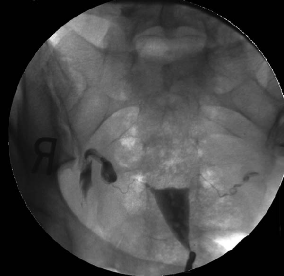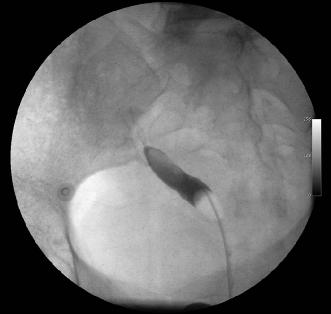PA Anatomy-Pelvis: Case 2 |
||||||
 |
||||
 |
||||
B |
||||
A |
||||
These studies are called 'hysterosalpingograms'. In this type of exam, a catheter is inserted into the cervix and contrast is injected into the uterine cavity. A balloon is blown up to prevent contrast from leaking out into the vagina. Study A is of a uterine deformity called a unicornuate uterus (one horn). Study B is a normal exam. Try to find the uterine (Fallopian) tubes on either study. |
||